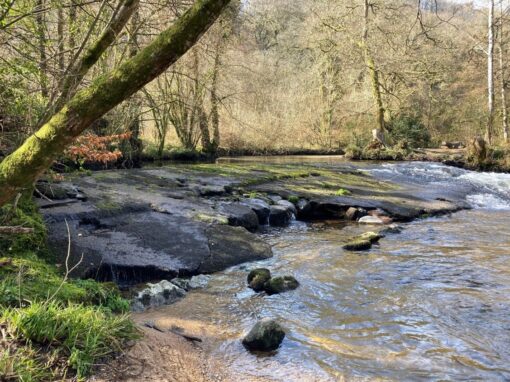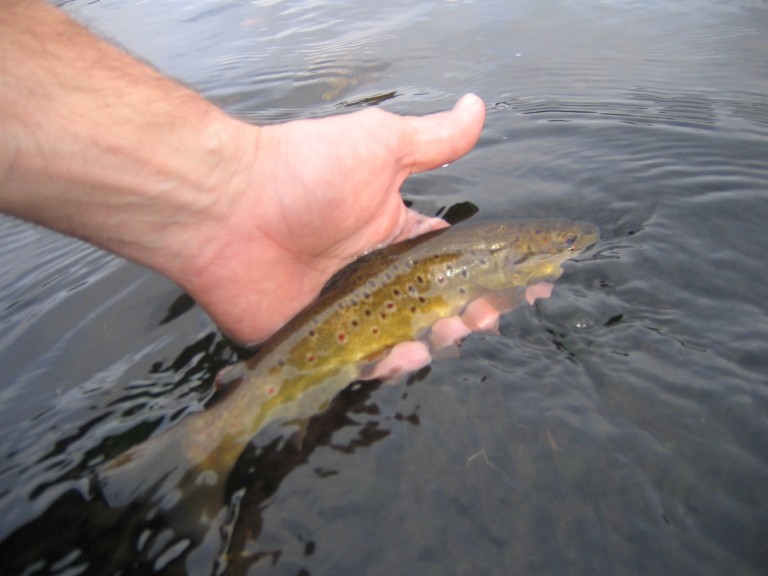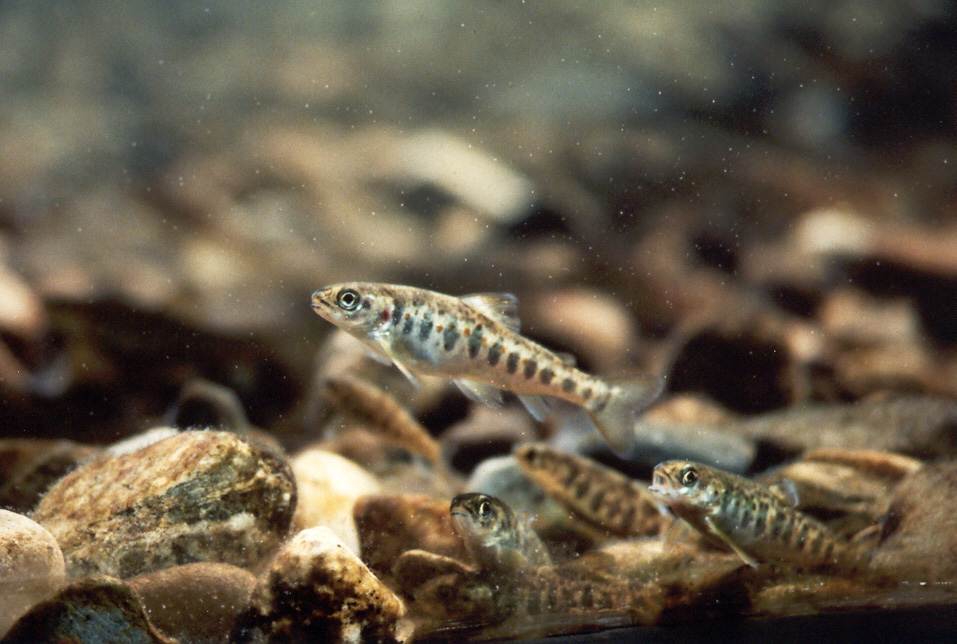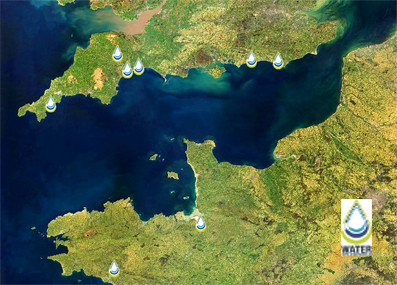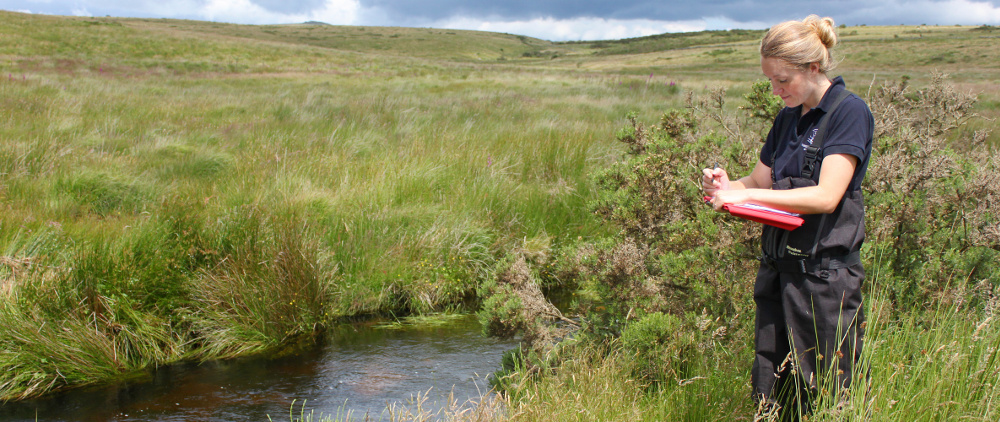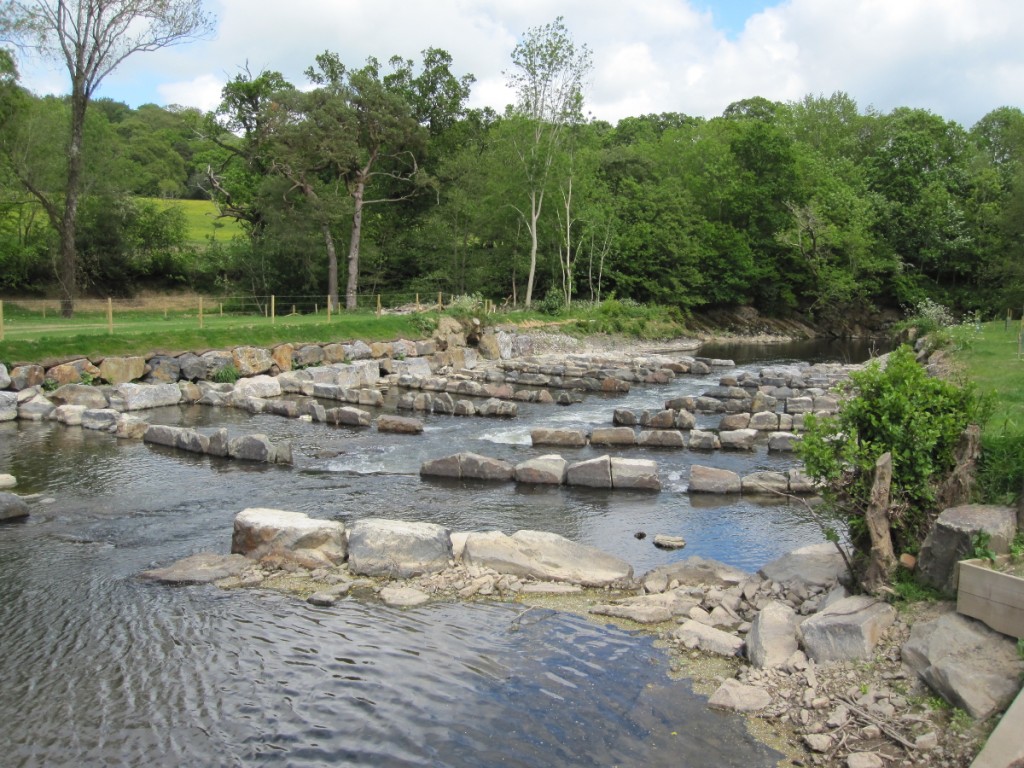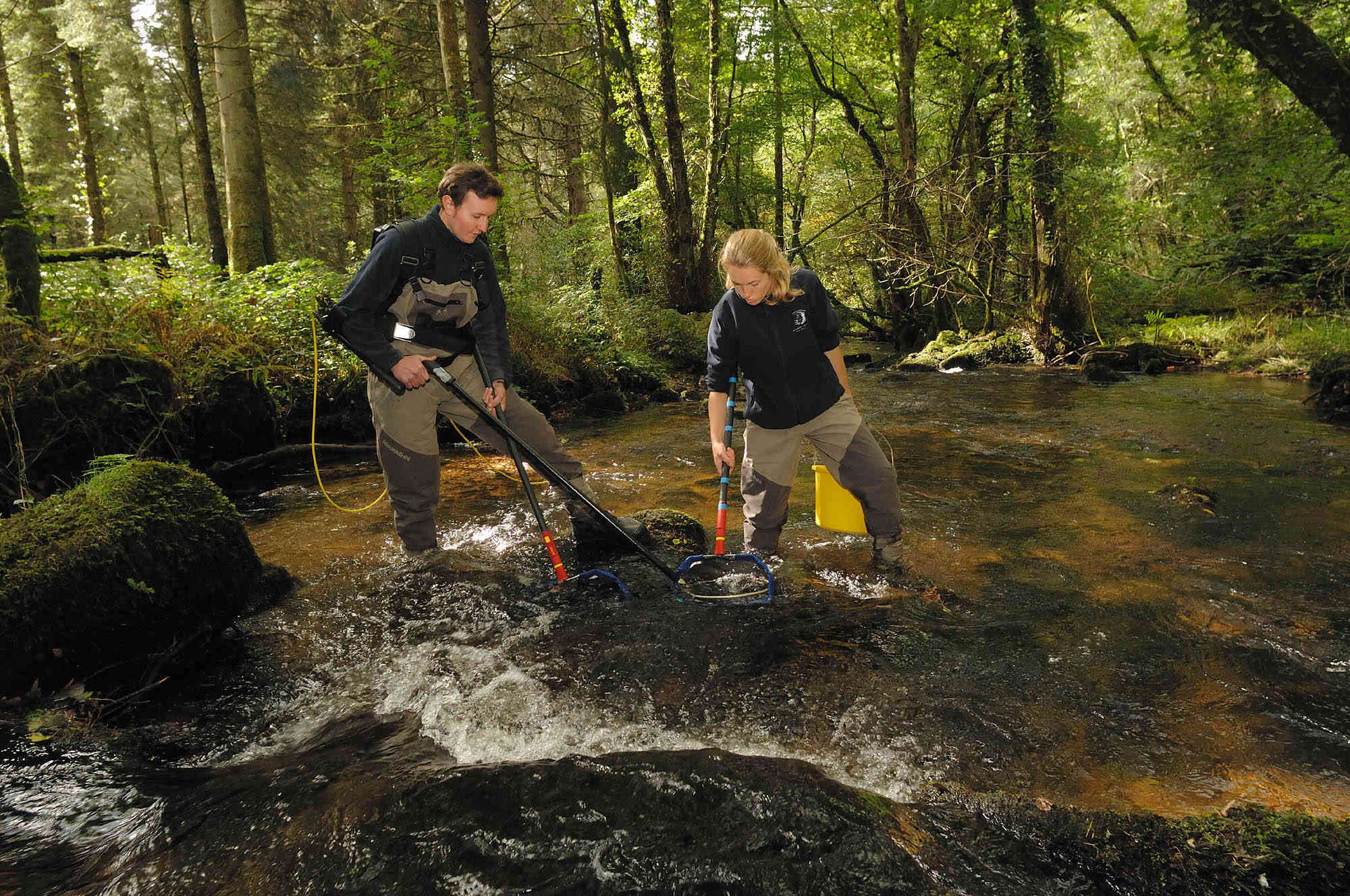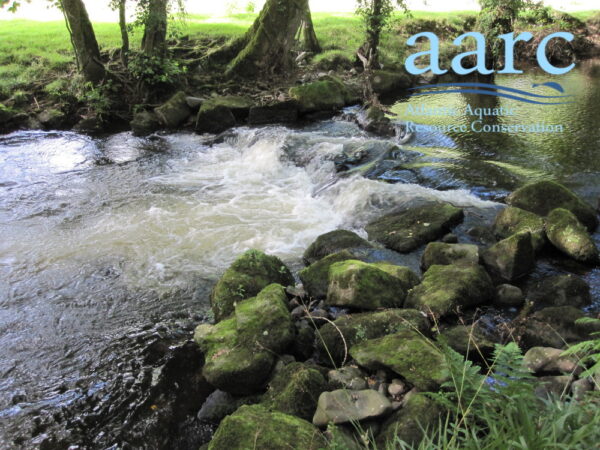Since 2009 the Westcountry Rivers Trust Together with the River Taw Fisheries Association and the Environment Agency, have worked to improve migratory fish passage along the River Taw. All 11 barriers to fish migration were identified on the River Taw as well as on its major tributaries. Primarily the aim was to remove these obstacles, as was the case with the North Wyke weir. However this was not always possible for historic, social or economic purposes and in these cases fish passes and easements were installed to facilitate passage upstream. Adjustments have been made to Head Weir on the River Mole, Clapworthy Mill on the River Bray and Colleton, Irishman’s Wall, Sticklepath and North Wyke, all on the Upper River Taw, to allow fish passage through. This project has successfully opened up the river for migratory fish and allowed them access to spawning grounds that were previously obstructed.
Head weir on the River Mole was completely replaced with a state-of-the-art pool and riffle system that is the first of its kind in Britain. The old Head Weir was a 2m high smooth-faced concrete shute that, despite having a fish pass on it, was regarded by many as an almost complete barrier to fish migration up the River Mole to the large spawning and nursery areas that are known to exist in its headwaters. This was replaced by a spectacular and innovative structure that will transform the ecology of the River Mole. The new pool and riffle system, which is nearing its completion, is a 60 metre long run of embedded tombstone-shaped boulders set at 5m intervals to create a stepped-pool system with a 1 in 30 gradient. The structure will create a diverse array of flow and channel characteristics that will open the river up to fish migration in high and low flow conditions and yet still serve to divert some flow into the mill leat of the historic Head Mill (the original reason for there being a weir on the site).
Going forward in 2015, the project will continue to improve fish migration through tackling improved access to valuable spawning tributaries and addressing some of the natural barriers that exist as debris dams which have built up over years and which can be completely impermeable to fish.
Other Fisheries Management Activities
